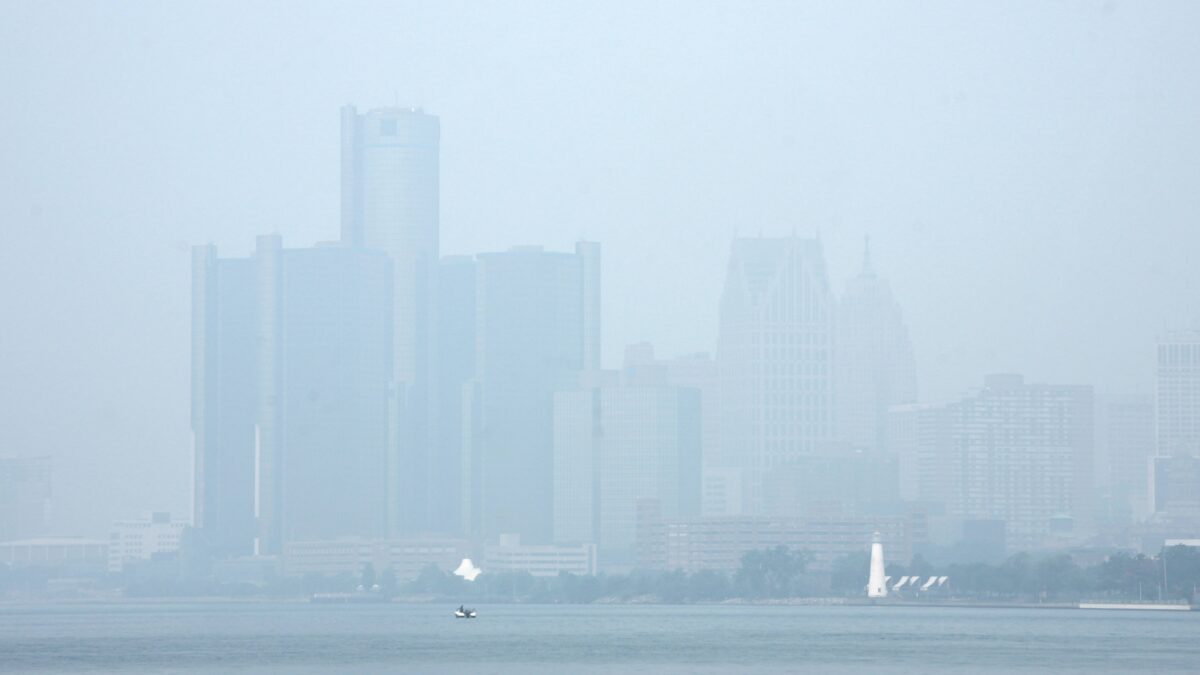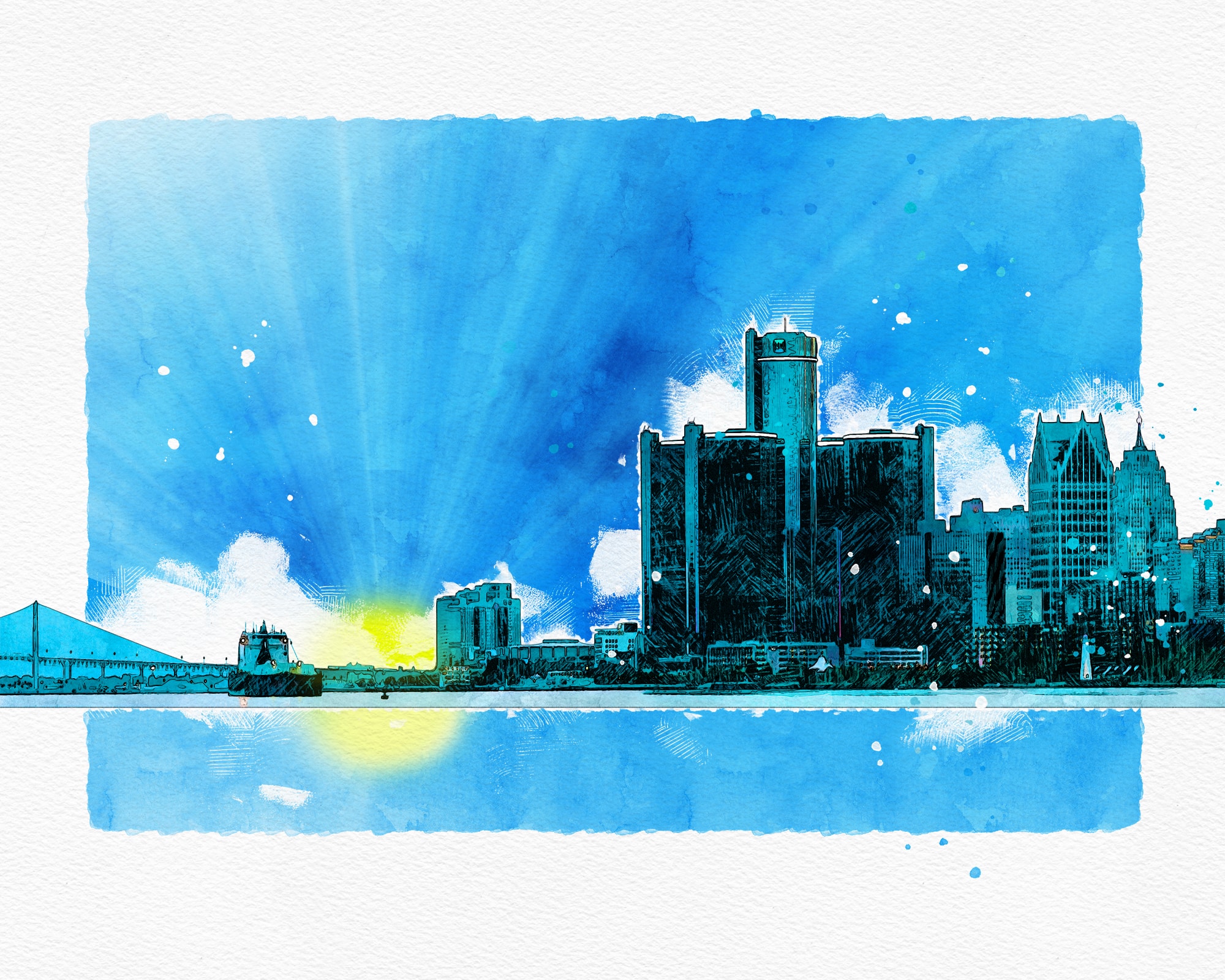Overview:
-"It's always safe to hedge your bets that somewhere is going to be having a pretty big fire season," says the University of Utah's Derek Mallia.
-In July 2023, a low-pressure system pulled smoke from Canadian fires to ground level.
-An expert on Canadian wildfires says 2025 is shaping up to be a typical year, rather than a record-setting one like 2023.
Ongoing drought and high temperatures have driven wildfires in Minnesota, Wisconsin, Manitoba, and Ontario this spring, with Michigan’s Department of Environment, Great Lakes, and Energy reporting a chance of smoke in the Upper Peninsula this week.
Experts say it’s too early to predict whether Michigan will see significant amounts of smoke from large fires like the ones that hit Canada and the western U.S. in recent years.
A lack of drought in swaths of California and Canada make it unlikely the fire season will be as bad as 2020 or 2023, according to Derek Mallia, an assistant professor of atmospheric sciences at the University of Utah. In 2023, Midwestern cities were blanketed with smoke that led to an estimated two dozen deaths in metro Detroit.
Mallia cautioned that climate change “loads the dice,” making things hotter, drier, and more susceptible to fire. And research shows that warming could lead to more drought and wildfire in Canada’s forests, posing a threat to Michigan.
Almost all of the United States is expected to see above average temperatures this summer, with large portions of the Midwest and Pacific Northwest experiencing below average precipitation, according to the National Oceanic and Atmospheric Administration’s three-month forecast.
“It’s always safe to hedge your bets that somewhere is going to be having a pretty big fire season,” Mallia said.
‘Warning sign’ in the Pacific Northwest
Mixed drought and snowpack conditions across the western U.S. could influence this year’s smoke and fire season, Mallia said.
The dense forests in Northern California had a wet winter, with significant snowpack, or accumulated and compressed snow. Mallia refers to mountains and snowpack as the “water towers of the West” that hydrate forests.
Things look differently in the Pacific Northwest, Idaho, and Montana, parts of which are experiencing moderate, severe, and extreme drought, according to the U.S. Drought Monitor. Mallia cautioned that drought data may also not reflect low snowpack in areas not currently experiencing drought.
“The thing that actually sticks out to me as being a potential warning sign is that even though it wasn’t particularly dry in that area during the wintertime, they didn’t actually get that much snow,” he said of the Pacific Northwest.
Fire risk will be high across most of Oregon, Washington, and Montana as well as parts of Idaho, California, and Nevada in July and August, according to the National Interagency Fire Center’s fire potential outlook.
In 2020, smoke from California, Washington, and Oregon wildfires led to hazy skies in Michigan, although news outlets reported little effect on air quality. But distant fires can impact Michigan air quality. This occurred in July 2023 when a low-pressure system pulled smoke from fires in Western Canada down to ground level.
MORE REPORTING FROM PLANET DETROIT
Climate is adding to Detroit air quality problems: American Lung Association
Detroit’s failing air quality grade in the American Lung Association’s State of the Air Report highlights the impact of climate change and wildfire smoke, as over 77 million people nationwide face unhealthy PM 2.5 pollution spikes.
Canadian wildfires are heating up, bringing smoke to Michigan
This year’s fires are much smaller than 2023’s historic blazes. However, persistent dry conditions in Western Canada could mean more fires and smoke are coming.
Study: 2023 Canadian wildfires led to 169 deaths in Michigan
Public health expert says Michigan residents need to recognize the deadly risk posed by smoke waves and take measures to protect themselves and their communities.
Despite early fires, Canada could see ‘typical’ fire year
Although parts of Canada’s western and central provinces are experiencing drought, it’s unlikely to be a major fire year, according to Brian Wiens, managing director of the research partnership Canada Wildfire.
“We’re looking at sort of a typical year,” he said, which would mean 5 to 7 million acres burning across the country. In contrast, over 45 million acres burned in 2023, an area roughly the size of North Dakota. This was more than double the previous record set in 1983, when 17.5 million acres burned.
Canadian wildfires pose a special threat to air quality because of the sheer size of the country’s forests and the type of trees they contain. Boreal forest covers much of the country, composed mostly of coniferous trees like spruces and pines that are more flammable than deciduous trees.
In 2023, fires in Quebec and Ontario combined with northern winds to blanket Detroit in smoke.
This year, large fires in western provinces may become an issue in June and July after coniferous trees pass through their “green up” phase, when they put out new growth and are less flammable. The hotter and drier summer months can also bring thunderstorms, leading to new fires.
“All things being equal, British Columbia doesn’t usually burn until July, although there’s been exceptions,” Wiens said, noting that in 2021 and 2023, western fires kicked off in early June.
British Columbia, Alberta, Saskatchewan, and Manitoba could see an above average fire season, Wiens said, although smoke from these areas wouldn’t usually affect Detroit.
Great Lakes could have smoky future
Robert Field, a climate modeler and fire scientist at Columbia University, said this fire season doesn’t look like “anything exceptional,” but he stressed the difficulty of using seasonal forecasts to predict fire activity. Michigan may be increasingly vulnerable to wildfire smoke from areas like northern Ontario in years to come, he said.
Canada could see an increase in the area burned by wildfires, with rapid climate change above 2 degrees Celsius leading to an annual burn area similar to 2023’s by 2090, according to a 2024 study in npj Climate and Atmospheric Science. Keeping warming below that level could limit the area burned to near 2004-2014 norms, the report found.
Another research paper, published in the journal Nature, finds North America could see an increase in “flash droughts,” when low precipitation and high temperatures lead to a rapid onset drought. The annual risk may increase from 32% in 2015 to 49% in 2100, according to the study, with northern Ontario and Quebec being heavily impacted under various climate models.
Field said the papers suggest that areas from the Rocky Mountains to the Great Lakes may be dealing with more smoke from sources in various parts of Canada as well as the U.S.
“When I think of places in North America that really have to pay attention, it’s like a box from Detroit to Minneapolis to Calgary,” he said.





